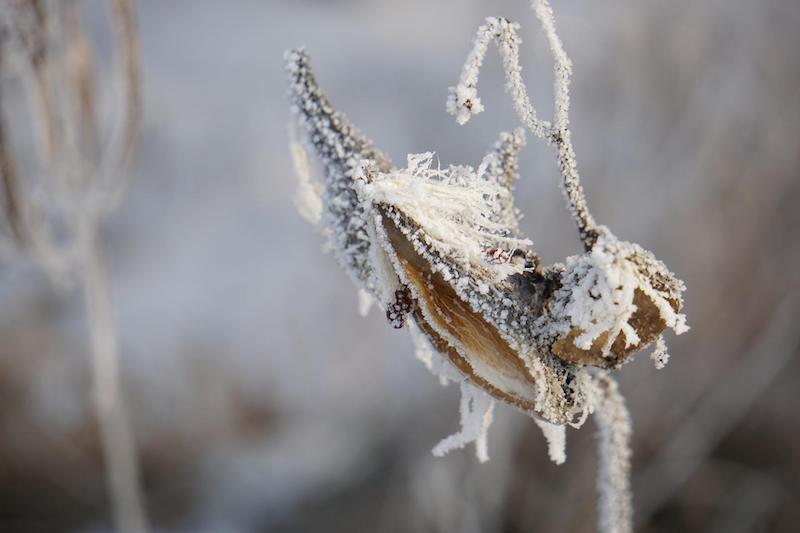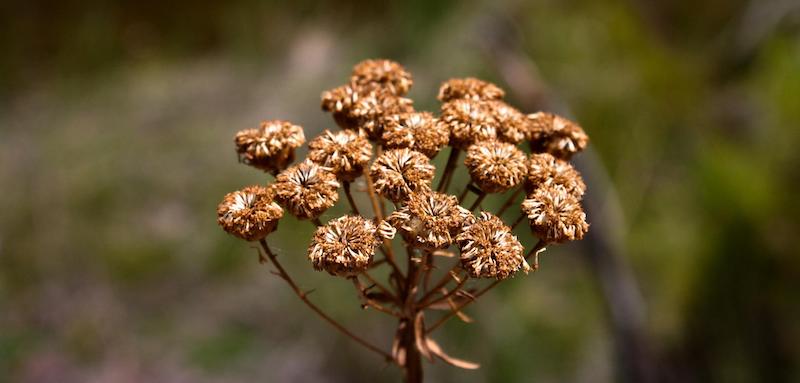Summer is the primary growing season for Milkweed. Butterflies favor this flowering beauty, which requires very little care. Native Milkweed is herbaceous, and all growth dies after the first frost. Tropical Milkweed can continue to grow in areas with mild fall and winter seasons. Learn how to overwinter Milkweed plants, so they eagerly return each spring.

Protecting Milkweed in Winter
Winter protection is unnecessary for Milkweed plants. Native plants are herbaceous and will go dormant in the winter. Tropical plants will die back in cold regions but may continue to grow in warm areas. Apply a layer of mulch to tropical plants to protect the roots from temperatures dips.
Cutting Back Milkweed For Winter
Milkweed plants should be cut back for winter. Native Milkweed will die back on its own, but tropical Milkweed will continue growing in mild climates and may prevent Monarch butterflies from migrating south in the fall. Tropical plants can also support a parasite, Ophryocystis elektroscirrha (OE), that can be detrimental to butterfly health. Cutting back tropical Milkweed plants in October will kill the parasite and protect butterflies. The plants will resprout in the spring.

Milkweed Winter Care in Pots
Potted Milkweed plants should be trimmed back in the fall. At the low end of its growing range, potted Milkweed should be stored in a protected area, like a garage, shed, or basement. The area does not need to be heated, but keeping the container in a covered area will protect the roots from getting too cold, which could be damaging. The container can be moved outside when the temperatures are consistently warm.
Watering Milkweed in Winter
Milkweed plants only need water when they are actively growing. Plants cut back for the winter do not need water. Tropical Milkweed that continues to grow in warm regions may need water during a dry spell.
Growing Milkweed Indoors
Since native Milkweed plants are herbaceous and die back in the fall, they do not make good houseplants. Tropical Milkweed is an evergreen subshrub and can be overwintered indoors. Keep in mind this plant has high light needs and may fail to thrive when grown inside year-round. Place it in a window with at least 6 hours of direct sunlight. Many gardeners start seeds indoors before moving established plants outdoors.
Steps To Care For Milkweed in Winter
There are several types of Milkweed plants, and the variety will determine the appropriate winter care. Native Milkweed plants die back after the first frost and do not require much care. Tropical Milkweed plants can survive in warm regions, but the foliage should be cut back in the fall.
Step 1 - Cut back native Milkweed plants to 6 inches tall once the foliage fades.
Step 2 - Tropical Milkweed can continue to grow in warm areas, but plants should be cut back in the fall when migratory butterflies pass through the area.
Step 3 - Potted plants should be moved to a protected area during the winter.
Sources:
"Time to Cut Back Tropical Milkweed." IFAS Extension, University of Florida. nwdistrict.ifas.ufl.edu
"Tropical Milkweed, Asclepias currasavica." University of Wisconsin-Madison Division of Extension. hort.extension.wisc.edu
 |
Author Alison Cotsonas - Published 08-07-2022 |
